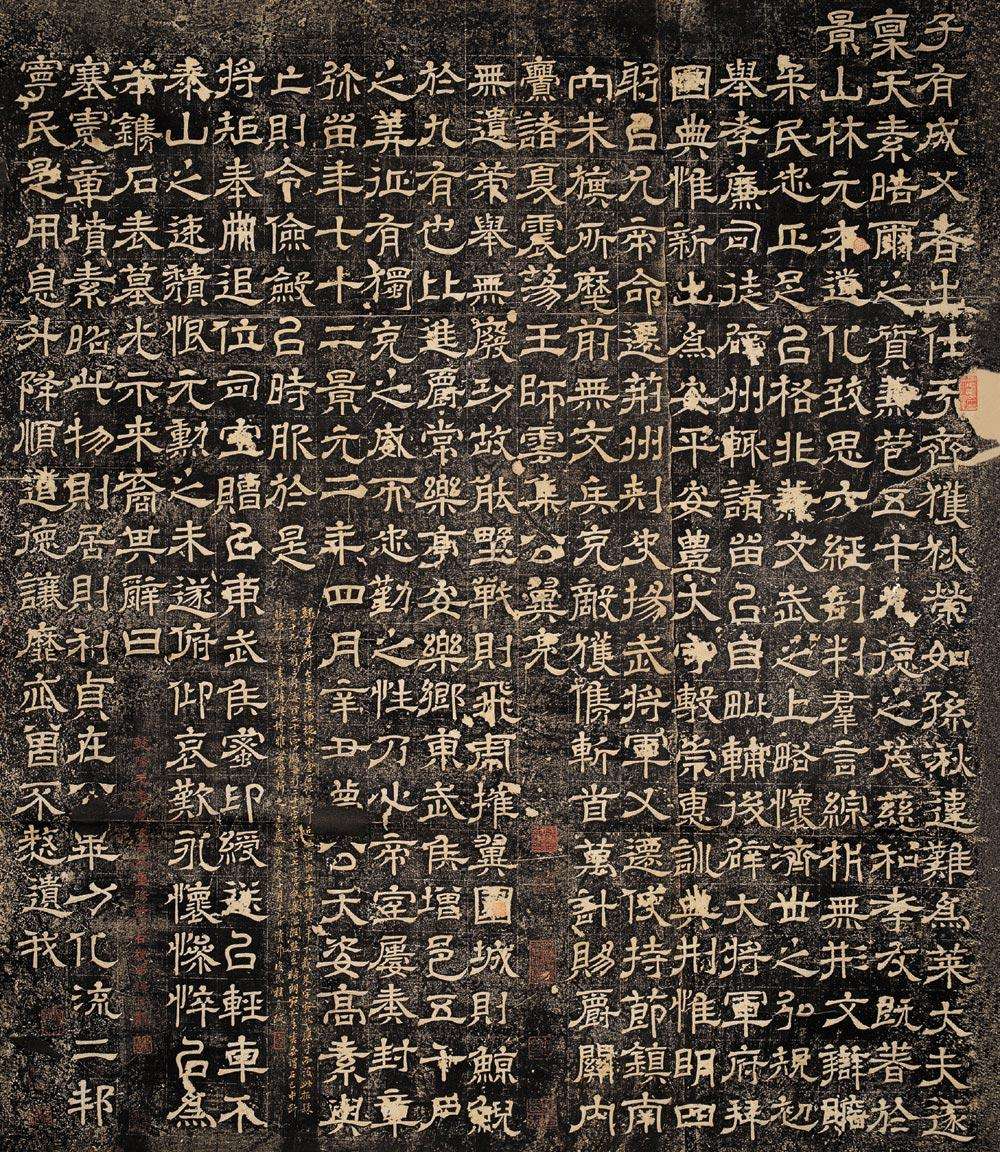
Three Kingdoms Wei "Wang Ji Remnant Monument" Motuo 108× 92cm 2005 Spring Auction Ancient Books Rare Book
Estimate RMB 150,000-200,000
Seal: Nanhai Pan's Treasure, Shi Qian's Seal, Shoushi Secret Treasure, Zhang's Gonggao, Suegu, Siji's Examination, Zulu's Treasured Calligraphy and Painting Gold Stone Seal, Xiji's Ancient Carved Rare Book, Sun Jizhong's Seal.
"Wang Ji Monument", that is, "Wang Ji Remnant Monument", the full name is "Dongwu Marquis Wang Ji Monument". Three Kingdoms Wei Lishu inscription. Jingyuan was founded in Luoyang in the second year. In the early years of the Qianlong Dynasty, the peasants' settled village fifteen miles north of Luoyang City was dug up, and then moved to the ancient pavilion in the city, and then embedded in the wall of Mingde Middle School. Only the second half of the stele remains. The inscription is also unfinished, and traces of the Zhushu can still be seen at the place where it is not written. The "Compilation of Golden Stones" contains: The stone is four feet and five inches high and four feet wide, with a total of nineteen lines, and each line contains words ranging from twenty-one to twenty-two. The law is also good. In the eighth year of Guangxu (1882 AD), Du Menglin carved after the last trip. The stele is now in the Luoyang Museum.
This book is rarely circulated, and only the Chinese History Museum in China holds Zhao Shijun's initial tuoso book. This is the Qianlong first year of the Qing Dynasty (1736) Ling Shiqian, Jiaqing Seven Years (1803) Guifu inscription.
The stele lord Wang Ji (?~261), also known as Bo you, was a native of Donglai (魏治掖, in present-day Ye County, Shandong) and Qucheng (the ancient city was in the northeast of present-day Ye County). Emperor Wen of Li, Emperor Ming, King of Qi, Duke Of Guixiang, and Emperor Yuan of the Five Dynasties, with both culture and martial arts, were honored by the Wei Chamber. The official to the Marquis of Dongwu, the second year of the Wei Yuan Emperor Jingyuan's death, posthumously awarded Sikong, the title of "Marquis of Jing". The Chronicle of the Three Kingdoms and the Chronicle of Wei is passed down, and there are many achievements, official positions and inscriptions.
According to legend, there was an unfinished Zhushu script at the time of excavation, "unfortunately, no one can identify, it is engraved, and it is not polished." (See "The Golden Stone Trek of the Teaching Hall"). According to Du Baoyun: the first three lines of the uncarved person at the top are one word per line, and the Xu line is two words per line; the lower line is missing five words each line. There is no inscription date, but the stele is based on the Xin Ugly Xue in the second year of the Jing Dynasty (238 AD), and the tomb of the "Stone Table" was also erected by the Edict. "It is known that the monument should be erected shortly after Ki's death. Although it is a fragmentary stele, it has become a powerful empirical evidence that the inscription of the Han and Wei dynasties is a first book Dan and then engraved.
During the Three Kingdoms period, monuments were forbidden, and the number of surviving stones was very small, and the natural expansion was even less. The rubbings of the "Wang Ji Remnant Stele" and its wave flipping and flat long glyph form the characteristics of the era of Cao Wei Lishu, and the "Shangzun Number Stele" and "Zen Table Stele" of the same period have mostly been broken and scattered, so the "Wang Ji Remnant Stele" is a stele inscription that can stand prominently in the Three Kingdoms period. The calligraphy of the "Wang Ji Stele" is similar to Wei Zhi's "Zen Table", "Shangzun Number" and "Cao Zhen Remnant Stele", with a strict knot, cut with a pen, and the wind god Xiong Jian Qingjun. His use of the so-called "folding knife head" is more intense (see the "Zen Table" article), and the shape of many characters has become as straight as the kaishu, so critics also refer to it as "upper to the source, lower to the Wei Qi style (by Yunlong's "Ding'an Inscription").
The "Stele of Wang Ji" is written in Qing Qian Daxin's "Qianyantang Jinshi Wenbaowei", Bi Yuan's "Zhongzhou Jinshi Record", Wu Yi's "Zhitang JinshiBao", Wang Chang's "Jinshi Compilation" and other books. The "School Monument Essay" said: The early Tuoben "concurrent, zhi, wen, soft, division, canon, 麾, knight, lift, none, waste, book, yuan, car" and other words are still intact.
The "Remnants of Wang Ji" are all recorded in Qing Qian Daxin's "Qianyantang Jinshi Wenbaowei", Hua Yuan's "Zhongzhou Jinshi Record", Wu Yi's "Zhitang Jinshi Bao", Wang Chang's "Jinshi Compilation" and other books.
Other topography of the "Monument of Wang Ji":